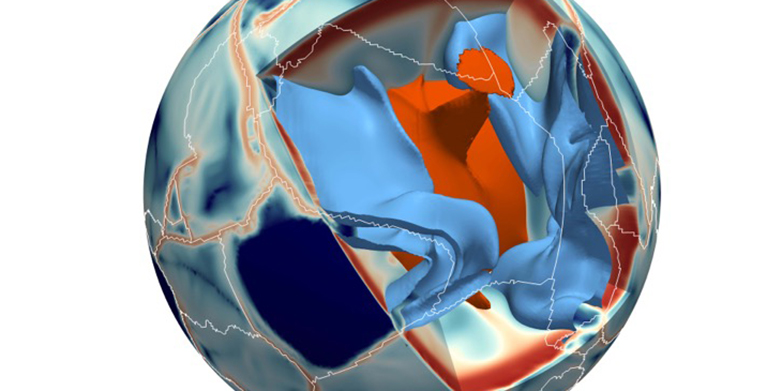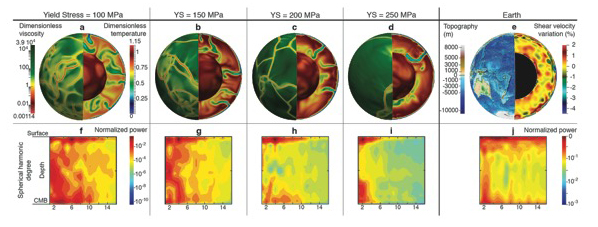A most irregular puzzle
Thanks to a complex interplay between the earth’s mantle and the lithosphere, the earth’s surface consists of tectonic plates of varying sizes. ETH researchers and their colleagues have now developed a numerical model for this relationship. Their model indicates that if the lithosphere had a different rigidity, the earth would look quite different.

The topmost layer of the Earth, or lithosphere, is like a tricky jigsaw puzzle. A total of 52 larger and smaller plates form the outer shell of the Earth, thus essentially shaping its appearance. What is unusual about this puzzle is that the individual pieces have different sizes. The 7 largest plates together cover a whopping 94 percent of the earth’s surface, whereas the remaining 45 smaller plates account for just 6 percent. A closer look also reveals that the size distribution of the smaller plates follows different rules than that of the larger plates: the smaller ones have a wide range of sizes, while the large plates all have a similar size.
First self-consistent model
Over the past few years, geophysicists have proposed different reasons for this puzzling distribution. A research team from ETH Zurich and the University of Lyon are now taking a new approach, presented in the current issue of Nature. Using a numerical model, the researchers are able to provide an elegant explanation for the size distribution of tectonic plates. “This is the first time a model has self-consistently demonstrated why we have only seven large plates and so many smaller ones,” explains Paul Tackley, Professor for Geophysical Fluid Dynamics at ETH Zurich’s Institute for Geophysics.
The new model takes into account the convection currents in the Earth’s mantle, which drive the movement of tectonic plates, as well as the behaviour of the plates along their boundaries. Subduction zones are especially important in this regard. In these zones, where two plates collide, one is forced under the other and pushes deep into the Earth’s mantle.
In places where the subduction zones are curved, the plates are subjected to greater mechanical stress. Once that stress exceeds a certain level, the plate breaks apart at that point – creating a new, smaller plate. “This explains why we frequently find smaller plates along the subduction zones and not along the mid‑ocean ridge, where the plates drift away from each other,” says Tackley.
Two factors
As it turns out, plate size distribution can be explained by the complex interplay of two factors: movements in the Earth’s mantle and the mechanical behaviour of the lithosphere. In calculating the plate size distribution, when the researchers input an average value that more or less corresponded to the lithosphere’s actual strength, the result was a statistical distribution that was very close to observed values. However, when they used a lower strength figure, this changed the size distribution markedly: fewer larger plates, but many more small ones. The opposite occurred if they increased the strength value: large plates became even larger and there were fewer small plates. In essence, this means that if the Earth’s lithosphere had a strength other than what it has currently, the surface of our planet would look completely different.

Reference
Mallard C, Coltice N, Seton M, Müller RD, Tackley PJ. Subduction controls the distribution and fragmentation of Earth's tectonic plates. Nature Advance Online Publication (AOP) 15 June 2016. DOI: external page10.1038/nature17992call_made
